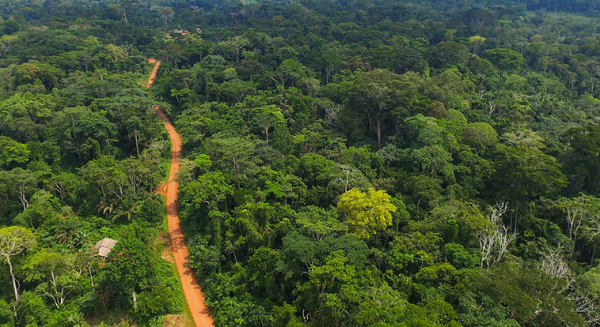
Possible Solutions to Ghana's Galamsey Problem
The top 6 solutions to address the issue of galamsey in Ghana focus on a holistic approach that tackles the root causes of illegal mining while ensuring environmental protection, economic growth, and social development.
Highlights:
1. Formalization and Regulation of Small-Scale Mining
2. Strengthening Law Enforcement and Anti-Corruption Measures
3. Promotion of Alternative Livelihoods
4. Introduction of Sustainable Mining Technologies
5. Public Awareness and Community Engagement
6. Restoration and Rehabilitation of Mining Areas
The top solutions to address the issue of galamsey in Ghana focus on a
holistic approach that tackles the root causes of illegal mining while ensuring
environmental protection, economic growth, and social development. Here are the
top solutions:
1. Formalization and Regulation of
Small-Scale Mining
- Description: Integrating illegal miners into
the formal mining sector can help regulate their activities, ensuring that
mining is done responsibly. This involves issuing mining licenses,
training miners in sustainable techniques, and providing them with access
to appropriate technologies.
- How it Helps: This would allow the government
to monitor and control mining activities, ensure safety and environmental
compliance, and generate tax revenue from small-scale mining operations.
- Implementation Steps:
- Simplify the process for
acquiring mining licenses to reduce barriers for small-scale miners.
- Provide technical training and
equipment to improve productivity and environmental management.
- Establish local regulatory
bodies to monitor compliance and provide support.
2. Strengthening Law Enforcement and
Anti-Corruption Measures
- Description: One of the major challenges in
combating galamsey is corruption and the lack of enforcement of existing
mining laws. Strengthening law enforcement and ensuring that officials do
not collude with illegal miners is essential.
- How it Helps: Effective law enforcement would
deter illegal mining, reduce environmental degradation, and protect
communities from the negative impacts of galamsey.
- Implementation Steps:
- Form specialized anti-galamsey
task forces with well-equipped personnel, including military and police
units.
- Establish transparent
anti-corruption units to monitor and prosecute officials found guilty of
aiding illegal mining.
- Utilize surveillance
technologies like drones and satellite imaging to monitor mining
hotspots.
3. Promotion of Alternative
Livelihoods
- Description: Many individuals resort to
galamsey because of poverty and the lack of other income-generating
opportunities. Promoting alternative livelihoods such as farming,
aquaculture, eco-tourism, and other sustainable industries can provide
viable options for people in mining regions.
- How it Helps: By creating new job
opportunities, communities become less dependent on galamsey, which in
turn reduces illegal mining activities and the pressure on environmental
resources.
- Implementation Steps:
- Introduce agricultural
development programs in mining areas, providing resources like seeds,
training, and equipment.
- Invest in rural infrastructure
to promote industries like eco-tourism and local crafts.
- Partner with NGOs and
international organizations to fund alternative livelihood projects.
4. Introduction of Sustainable Mining
Technologies
- Description: Galamsey activities often use
environmentally damaging techniques such as mercury amalgamation for gold
extraction. Introducing more sustainable technologies, such as
mercury-free extraction methods, can significantly reduce environmental
harm.
- How it Helps: These technologies can mitigate
pollution, improve miners’ health, and protect water bodies and forests
from toxic waste.
- Implementation Steps:
- Provide financial and technical
support for small-scale miners to adopt environmentally friendly mining
equipment and techniques.
- Work with research institutions
to develop and promote low-cost sustainable mining technologies.
- Establish incentive programs for
miners who use sustainable methods.
5. Public Awareness and Community
Engagement
- Description: Education and awareness
campaigns aimed at local communities can highlight the long-term
environmental, health, and social impacts of galamsey. Engaging
communities in decision-making can also foster local support for
anti-galamsey initiatives.
- How it Helps: A well-informed populace is
more likely to resist illegal mining and support sustainable development
efforts. Communities that understand the dangers of galamsey may also
exert social pressure on illegal miners to stop their activities.
- Implementation Steps:
- Launch nationwide campaigns to
educate people on the environmental and health consequences of illegal
mining, particularly in rural areas.
- Empower community leaders and
civil society groups to advocate for sustainable land use.
- Develop local forums where
community members can actively participate in the planning and monitoring
of mining activities.
6. Restoration and Rehabilitation of
Mining Areas
- Description: Many regions affected by
galamsey are left with destroyed landscapes, polluted rivers, and unusable
land. Restoration projects aimed at rehabilitating these areas through
reforestation and waterway cleanups can help restore ecosystems.
- How it Helps: Environmental rehabilitation
efforts can restore degraded land and water bodies, enabling them to
support agricultural and other sustainable activities once again. This
will also improve the overall health and quality of life in affected
communities.
- Implementation Steps:
- Implement large-scale
reforestation projects in mining areas with government and NGO funding.
- Launch programs to clean
polluted rivers and promote safe water access.
- Introduce “polluter pays”
policies where mining operators (including illegal miners if caught) are
held responsible for rehabilitation costs.
Additional Solutions to Support the
Top Solutions:
- Decentralized Local Governance:
- Engage local governments in
mining areas to take ownership of monitoring and controlling illegal
activities.
- Increase transparency in revenue
from formal mining operations, ensuring that local communities benefit
from mining royalties.
- Partnership with International
Organizations:
- Leverage the expertise and
resources of global environmental and development organizations to
enhance enforcement, monitoring, and restoration efforts.
- Seek international collaboration
in building capacity and sharing sustainable mining technologies.
- Water and Forest Conservation
Programs:
- Introduce legal protections for
key water bodies and forest reserves, making it illegal for any mining to
take place in these areas.
- Establish community-led
conservation projects that incentivize the protection of natural
resources through job creation in forest and water management.
Conclusion
The issue of galamsey is multifaceted and requires a comprehensive
approach to address both its causes and consequences. The top solutions
emphasize formalization, law enforcement, alternative livelihoods, and
sustainable practices, as well as rehabilitation of affected areas. A
combination of government action, community involvement, and international
collaboration will be essential in implementing these solutions effectively. By
addressing the socio-economic drivers of galamsey and ensuring environmental sustainability,
Ghana can overcome this challenge and create a more balanced path to economic
development and resource conservation.

